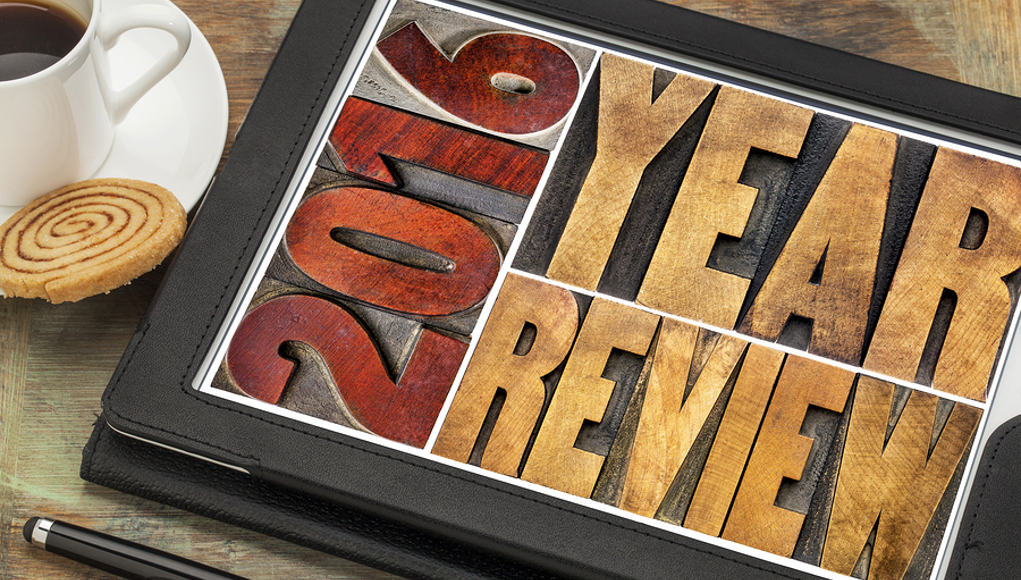A Year in Review: 2016 Publications

With a new year just around the corner, we’re taking a look at our #YearInReview to share all of the publications we developed this year. From bundles to white papers to toolkits, there is sure to be something you’ll want to add to your reading list for the new year. You may even want to share some of these with your colleagues to help support their learning for the new year.
Here’s a review of what we’ve learned with our partners and shared with our readers this year:
Smart Bundles
Getting Smart on Out of Class Student Support Services
A key challenge facing schools in the next two decades is the following: how can we take luck out of the HigherEd equation and ensure, systematically, that every student finds THEIR purpose and develops THEIR path and THEIR support network of people to support their success in school and in life thereafter? Getting Smart and Fidelis Education partnered to share more about what it takes to support students outside of class and take the luck out of the HigherEd equation.
Getting Smart on Assessing and Measuring Social and Emotional Learning
A new consensus is emerging in K-12 education today: social and emotional learning (SEL) is essential not just for its own sake, but for its wide range of outcomes in academic and life success. Getting Smart partnered with ProExam/Tessera to explore the need for SEL in schools and what tools are available to measure its impact.
Getting Smart on Rethinking Professional Learning
This 5-blog series explores emerging and best practices in professional learning, including the important role higher education institutions can fill. Featured are several case-study examples from the High Tech High Graduate School of Education (HTH GSE) and schools currently being served by its graduates.
Getting Smart on Learner-Centered STEM
This 7-blog series highlights the Learner-Centered STEM model at Harmony Public Schools—now serving over 30,000 students K-12 in Texas. The bundle features student, teacher and leader perspectives on topics like project-based learning, teacher professional learning, school culture, distributive leaders and STEM partnerships.
Getting Smart on Global Education and Equity
For today’s students to participate effectively and become successful in this changing world, they’ll need a global education. VIF International Education and Getting Smart partnered to closely examine the characteristics of globally competent students and address how K-12 institutions can utilize global education practices to equitably prepare all of today’s students for success.
Getting Smart on Teachers as Collaborative Curriculum Designers
On the front lines of education every day, teachers are the most familiar with which student needs are not being met and what is preventing them from being successful, which is why a teacher-developed curriculum is so important. This bundle explores the importance of teachers as curriculum designers, and how Literacy Design Collaborative helps support collaborative curriculum design while also providing important teacher professional development.
Getting Smart on Closing the Opportunity Gap
This series and bundle tell the story of University Academy—a K-12 charter school in Kansas City that we think is one of the best college prep schools in the country. The school serves 90 percent African-American and 70 percent economically disadvantaged students. Since 2004, 100% of UA graduates have been accepted to college, and almost 60% graduate with a BA or higher. By contrast, the national average for low-income college graduation is 9%. We partnered with UA to learn how they are able to get these great results and share their approach to closing the opportunity gap.
Project-Based Learning
Preparing Students for a Project-Based World
The new economy—and the growing inequities therein—significantly impact students and schools. This paper was the first in our year long “It’s a Project-Based World” campaign and explores equity, new economic realities, student engagement and instructional and school design in the preparation of all students for college, career and citizenship.
Preparing Teachers for a Project-Based World
Second in a series of three papers in our “It’s a Project-Based World” campaign, this paper explores how teacher preparation and professional learning can be better aligned to and modeled after the types of deeper learning environments we seek for students. Authors Tom Vander Ark and Emily Liebtag share a vision for teacher PD that embraces the opportunity of personalized PBL and also share what a truly prepared PBL teacher should know and be able to do.
Blended & Personalized Learning
Supporting English Language Learners with Next-Gen Tools
Almost five million students in the public education system are English Language Learners. Reaching all of America’s students includes meeting the needs of diverse learners that possess a wide variance in skills, backgrounds, cultures and family supports. To highlight existing technological tools and illuminate gaps in the field, Supporting English Language Learners with Next-Gen Tools illuminates key learnings from over 25 experienced English Language Learner (ELL) educators, experts, education technology leaders and thought leaders across the United States.
Realizing the Potential of Blended Learning: Beyond Personalized to Active Learning
This paper, produced by Apex Learning in partnership with Getting Smart, addresses the common misconception that active learning is only “hands-on offline,” and personalized learning stays “online.” Active and personalized learning leverages what we know about pedagogical best practices and realizes the full potential of technology to boost student outcomes. The paper is designed to highlight how the intersection between active and personalized learning yields an engaging and relevant experience that increases student achievement.
The Shift to Digital Education: Four Hallmarks of Digital Learning Success
Throughout this publication, written in partnership with Pearson Education, we examine why we must embrace digital learning in our classrooms, why digital doesn’t mean simply having technology available, and the four hallmarks necessary for success in the shift to digital education: a shared vision for powerful learning, empowered teachers and leaders, innovative digital learning models, and a thoughtful approach to purchasing and evaluating EdTech.
Blended Language Learning Toolkit: Classroom-Based Implementation
With the rise of blended learning and educational technology to personalize instruction, there is no reason why all American students shouldn’t have access to high-quality language instruction. This toolkit is designed to help educators implement blended language learning in their classrooms. While the toolkit focuses on the Rosetta Stone K-12 Language Learning Suite, many of the ideas and tools are applicable to blended language learning in general.
School Development & Design
Creating the Future of Learning: Singapore American School
This case study features a virtual tour of the Singapore American School, the largest single campus international school in the world and the largest American school outside of the U.S.
100 Tips & Insights for Opening Great New Schools
Opening a good, new school is an enormous challenge. It involves real estate, construction, financing, marketing and other tasks that are usually outside the experience of even the most veteran educators. What’s most important when opening a new school? How can it be done? We asked two dozen experts who collectively have opened more than a thousand schools and they share these 100 hard-won lessons.
Next Generation Career Pathways: A Manufacturing Case Study
The rise of anywhere, anytime learning and competency-based approaches provides the opportunity for Career and Technical Education programs to lead the way in terms of applying blended, competency-based education in practical ways. In this case study, we assert that new market demands are shaping next generation career and technical education opportunities.
Future of Learning
Generation Do-It-Yourself (GenDIY) Toolkit: Stories to Inspire You and Tools to Get You Started
“GenDIY” is the culmination of a year-long thought leadership campaign with 100+ contributions from young adults, thought leaders, entrepreneurs, educators and advocates. The interactive website and toolkit contain stories from young adults “hacking” their own education and career, as well as tools to inspire others to do the same. GenDIY is an education innovation project in partnership with Getting Smart with support from the J.A. and Kathryn Albertson Family Foundation.
Moving PD from Seat-Time to Demonstrated Competency Using Micro-credentials
Microcredentials are one of the hottest topics in education. Published by our team in partnership with BloomBoard, this “Educator’s Guide to Implementing Personalized, Competency-Based Professional Learning” is action-oriented. Download the guide to learn about: the problems that microcredentials solve, the benefits of competency-based recognition for educators, six steps to earning a micro-credential and best practices.
Policy, Pilots and the Path to Competency-Based Education: A Tale of Three States
Produced in partnership with ExcelinEd, this publication highlights how and why CBE pilot programs offer a promising strategy for states to begin the shift to competency-based learning. The three states featured—Idaho, Utah and Florida—all took slightly different paths that can provide different perspectives while informing and inspiring other states just beginning their own efforts. The report also has a set of recommendations for state leaders building upon lessons from policy efforts to advance CBE across the country.
As you can see, we’ve had a busy year but we’re excited to dive into 2017 to create more resources and guides for our audience. Keep an eye out in early 2017 for three publications in our “Learning and the Power of Place” campaign on implementing place-based learning in your school. And as a follow-up to the first Toolkit for Blended World Language, look for a toolkit for standalone online blended learning.
What are we missing? What could you use to help advance the space of teaching and learning? Send an email to [email protected] or tweet us at @Getting_Smart!
Ready to make an impact? Campaigns are an excellent way to connect with a variety of audiences around a similar theme and topic. They focus efforts and increase impact by engaging participants in a journey that provides insights in a range of media sources and published content. Interested in how campaigns can increase your impact and reach? Getting Smart Services can help. Email [email protected] to learn more!
For more, see:
- Our 45 Favorite Blogs of 2016
- Three Connectivity Trends to Watch in 2017
- 2016 #YearInReview and Predictions for 2017
Stay in-the-know with all things EdTech and innovations in learning by signing up to receive the weekly Smart Update. This post includes mentions of a Getting Smart partner. For a full list of partners, affiliate organizations and all other disclosures, please see our Partner page.




0 Comments
Leave a Comment
Your email address will not be published. All fields are required.